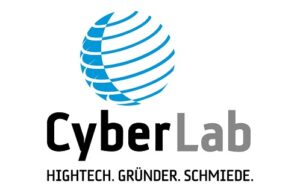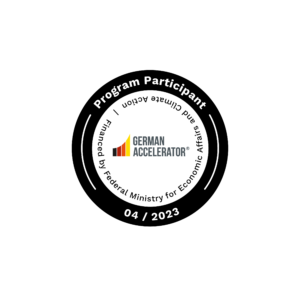Process Discovery vs. Process Mining
The key to process optimization
What is the difference between process mining and process discovery?
Two concepts have become indispensable in the world of business process analysis: process mining and process discovery. Both aim to gain insights into process flows. However, they differ significantly in their approaches and results. This newsletter highlights the differences and synergies between these two approaches.
Author: Christina Haury
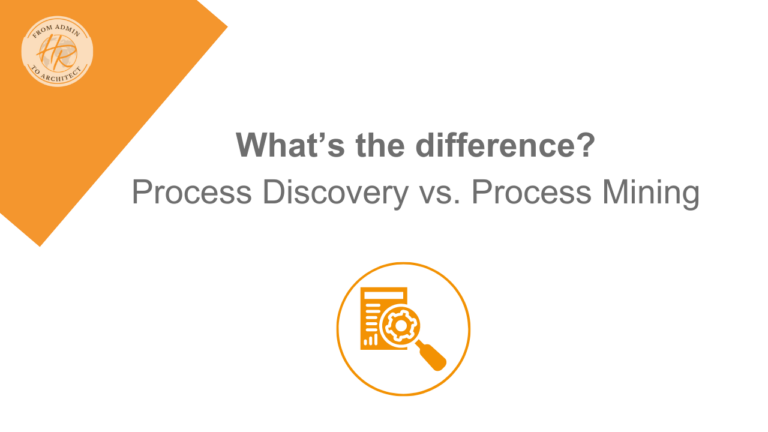
Table of Contents
1. Definition
Process Discovery
The process of identifying and documenting current business processes through observations, interviews and workshops.
Process Mining
A technique that analyzes event logs from information systems to understand and optimize the actual execution of business processes.
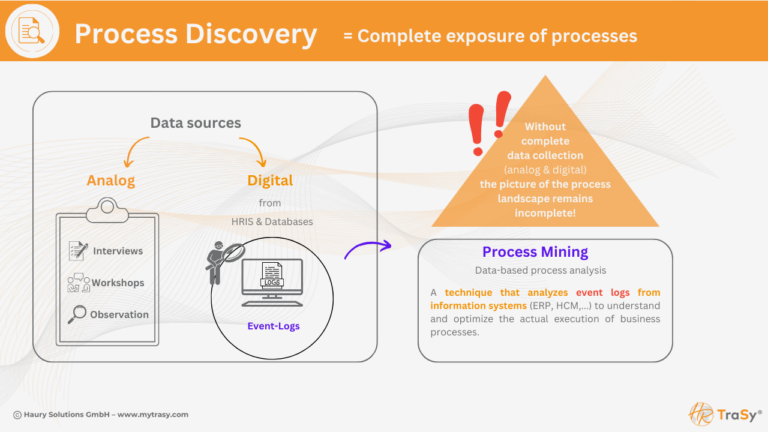
2. Process discovery and process mining - a distinction
Process Discovery and Process Mining are closely related concepts in the analysis and optimization of business processes. However, they have a specific relationship to each other and can be seen as independent but complementary approaches.
Process Discovery is the overarching process that focuses on identifying and documenting the current business processes within an organization. It involves researching processes as they are carried out, often through direct observation, interviews with employees, and analysis of existing documentation. The aim is to capture all the information about a process to carry out process mapping in a further step, which aims to gain a general understanding of a process.
Process mining, on the other hand, is a specific technique or tool within the broader framework of process discovery. It uses the data available in a company’s IT systems (such as event logs) to automatically visualize and analyze the actual workflows of business processes. Through process mining, companies can gain insights into their processes’ efficiency, compliance and potential weaknesses – which are mapped in software. It enables the objective analysis of actual process performance and identifies deviations from target processes and opportunities for improvement.
3. Areas of application and benefits
Process discovery and mining are important not just for the IT department. They play a central role in the entire corporate strategy. Process discovery is followed by process mapping, modeling, and optimization. This can bring about significant improvements in various areas such as finance, logistics, customer service, and HR.
4. Effects on companies
The combination of process discovery and process mining provides a comprehensive view of process efficiency and effectiveness within an organization. While process discovery creates the basis, process mining enables deeper insights into IT systems and the identification of optimization potential. Companies that use both approaches strategically can continuously improve their processes and achieve a real competitive advantage.
5. Summary: Definition
- Process discovery is an umbrella term covering the entire range of activities for discovering and analyzing business processes. It is an exploratory approach that aims to develop a comprehensive understanding of an organization’s process landscape.
- Process mining is a specialized method within process discovery that focuses on the data-driven analysis and visualization of processes based on digital traces in IT systems.
- In this sense, Process Mining is a sub-area or method of Process Discovery, not the other way around. Both concepts complement each other.
- For a definition of the other terms: process discovery, process mapping and process modeling, see this article
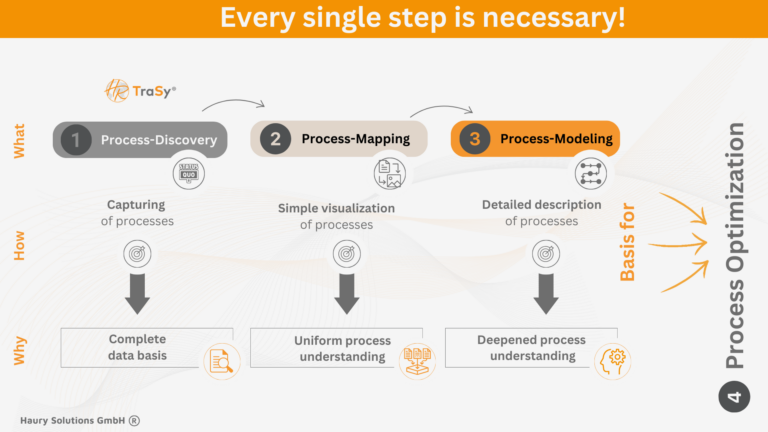
And if you would like to know how you can easily carry out this process independently and digitally, we would be happy to show you our software solution TraSy.
Haury Solutions GmbH
February, 2024
Which HR topics would you like to read more about? For requests just contact the author Christina Haury | LinkedIn – these will be gladly fulfilled!

